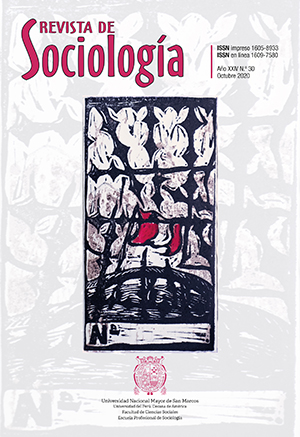The city, COVID-19 and “the reverse overflow”
DOI:
https://doi.org/10.15381/rsoc.v0i30.18909Keywords:
Cities, COVID19, Urban Development, Reverse overflow, Peru Migration, Public PoliciesAbstract
The author considers the changes that can be unleashed in cities from a reflection on the Peruvian case. The starting point is the return process that thousands of people start from the declaration of total immobility and strict quarantine decreed by the government from the second half of March 2020. A quick review is made of the emergence of the urban centers in the current territory of Peru from the archaeological finds of several thousand years ago to the present. In this journey, some characteristics that differentiate them and the role that internal migrations have played are pointed out. In particular, the migrations that occurred from the second half of the 20th century until the emergence of the COVID19 pandemic and the inverse overflow that is causing from Metropolitan Lima to smaller urban centers and from these to towns and villages, as well as to rural areas. He concludes by pointing out the urgency of raising urban planning and territorial conditioning policies within the new scenario that opens from the effects and economic, demographic, social and cultural consequences of the COVID19 pandemic of migrants who are not well received.
Downloads
Published
Issue
Section
License
Copyright (c) 2020 Mario Zolezzi Chocano

This work is licensed under a Creative Commons Attribution-NonCommercial-ShareAlike 4.0 International License.
AUTHORS RETAIN THEIR RIGHTS:
a. Authors retain their trade mark rights and patent, and also on any process or procedure described in the article.
b. Authors retain their right to share, copy, distribute, perform and publicly communicate their article (eg, to place their article in an institutional repository or publish it in a book), with an acknowledgment of its initial publication in the Revista Sociología.
c. Authors retain theirs right to make a subsequent publication of their work, to use the article or any part thereof (eg a compilation of his papers, lecture notes, thesis, or a book), always indicating its initial publication in the Revista Sociología (the originator of the work, journal, volume, number and date).






